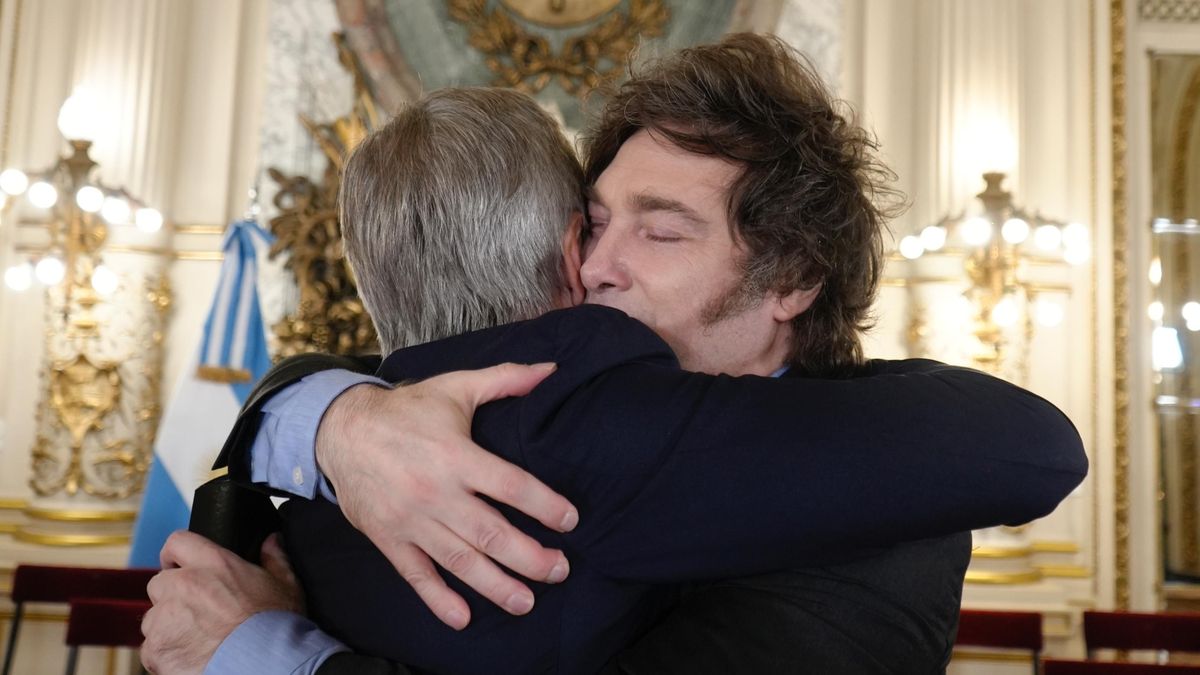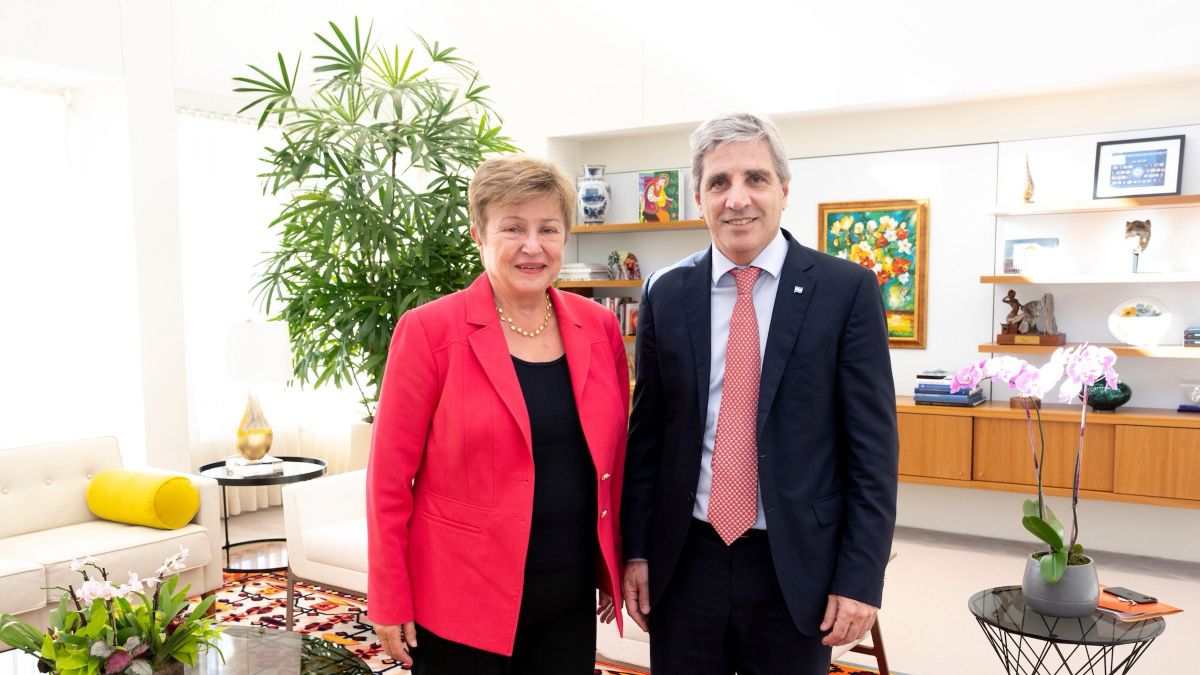The market has memory. But also smell. And today, the indicators that anticipated past crises in Argentina -from the hyper fragmentation of financial flows until the deterioration of net reserves and the return of “Carry Trade” as a structural strategy- they are present again. As if the country were caught in a sequence of Déjà Vu, the parallels with the critical outcomes of 2001 (of the Rúa) and 2018 (Macri) become increasingly analogous.
In the neighborhoods of the mid -term elections of 2025, the libertarian essay that heads Javier Milei It relies on an architecture of indebtedness and liberalization similar to the one that led to previous collapses, since 1981. Far from an organic recovery, the accumulation of reserves is leveraged in income of speculative capital, interest rates in unsustainable weights (29.50%) with an ironed dollar and, contractual clauses that They offer anticipated outputs to investors (as the Bonte 2030 rescue option). What could go wrong?
Milei Caputo Dollar
Milei and Caputo, the architects of the economic plan.
Scope
In the short term, the accumulation of reserves will be linked to capital entries … In this context, the treasure issued debt in local currency so not residents for an amount equivalent to US $ 1,000 million. Access to international markets helps increase BCRA reserves, although it is not a completely organic currency payment of the public sector, since the entrance is linked to a liability of the treasure that paid: 29.50% in pesos, when the market expected 22%. This measure supports the remoteization of the local currency by allowing banks to disin in treasure debt, increasing liquidity to grant credit to the private sector. It is obvious that banks are coming out of their very high exposure to a non -payment of the treasure, but now they expose themselves to lend to companies that sell less, win less or lose (the collection of the income tax fates strongly) and are more likely to breach the banks.
In terms of currencies, the evolution of the external commercial balance is crucial for the increase in international reserves. In April, exports were US $ 6,664 million, representing an increase of 2.3% year -on -year, but imports grew to US $ 6,460 million, embodying a 37.3% year -on -year increase. Almost all import items showed strong increases in quantities. The outstanding are: passenger car vehicles (+219%), fuels and lubricants (+70.1%), consumer goods (+68.4%), capital goods (+65.6%).
We pay Brazilian and Chinese salaries
Brazil’s imports grew in April (+53.6% year -on -year)experiencing a rise of (+212%) motor vehicles, (+147.9%) capital goods, consumer goods (49.1%), parts and accessories (16.8%), and intermediate goods (17%).
China imports increased (+92.5%); (+112.7%) in capital goods, (+164.5%) in consumer goods, and (+39.6%) in intermediate goods.
We pay salaries of foreign tourism companies and raise their sales in the US Paraguay, Chile and Uruguay. We even finance Bolivia “Bolivia” in the open sky “by Salta. These import data and tourism expenses abroad, transport us to the years of the “sweet silver”.
Given the very strong reduction of the commercial surplus and a super cheap dollar, the projections concern. In fact, in the last three months, and after adjusting seasonality, The commercial surplus decreased to only US $ 3.4 billion, compared to US $ 14,000 million in the last 12 months. Under this trend, the cases would project that the merchandise trade balance conveys around US $ 8,000 million for the entire year, reducing from US $ 19,000 million registered in 2024 at $ 11,000 million.
Thus, imports will continue to increase, at a faster rate, while the exchange rate is appreciated. As for exports, the behavior of volumes in the first months of the year has been acceptable, in general; If we compare it with 2023 (year of drought), it is excellent. However, the panorama shows a decrease so far this year, except in the case of primary goods. The main deterioration comes from industrial exports. The increase in local costs in dollars affects the margins, which has not been compensated with the lowest cost of imported inputs, or with a reduction of the tax load, moreover, the withholdings will increase.
The issue is that, as of May 21, the net reserves They showed an estimated negative balance in (-U $ S 8.5 billion)and the BCRA had to add near U $ s 5,000 million To meet the goal of (-U $ s 2,530 million) required by the IMF in a few days. He placed $ 1 billion in Bonte 2030 in pesos and would obtain a repo of US $ 1.5 billion, the rests would decrease the route to the goal only if they exceed US $ 1.5 billion, but only US $ 500 million have for the goal. The goal of net reserves committed to the IMF is adjusted up if there is indebtedness in foreign currency. Although possibly the government is obliged to request a “waiver”(Although it is not good to remind the IMF in 2018, starting with another request for forgiveness in the first review of the new programthe placement of Bonte 2030 It will allow to reduce that gap and face the debt payments planned for June, perpetuating the “Carry Trade” or “Financial Bicycle”. Even so, it would be necessary to accumulate dollars to achieve the objective committed to the multilateral body.
In addition to what has been expressed, a sales option (PUT) has been granted for Bonte 2030 buyers with a date of exercise on May 27, 2027. The inclusion of a clause of early rescue (“put”) It is not a fact to ignore. Despite the intimacy experienced by foreign investors with the Milei Administration, the history of Argentina (2001) and (2018) is a counterweight when it comes to taking risk. The output option (put) works as a emergency door For investors. This option represents a considerable change to Bonte launched by Caputo, in 2018. That is, if the economic or political landscape deteriorates, or if the government obtains a Bad result in the medium term electionsbond holders may exercise the option Without waiting at the final expiration in 2030.
In short, Argentina seems to have learned little from its recent tragedies. Cheap dollar and growing imports; Dependency of volatile financial flows, use of indebtedness in local currency to capture temporary dollars, and overexposure to non -resident investors; They build an extremely sensitive economic structure to any exogenous or endogenous shock. The “Put” clause of Bonte 2030 is a mirror of the structural distrust of the markets towards Argentine stability.
If the ruling party suffers a setback in the mid-term elections of October 2025-today, the probability is low, according to surveys-, the risk of activation of output mechanisms becomes a specific threat. The background is in sight in 2001, the political crisis unleashed a run; In 2018, it was the fiscal and external deterioration that triggered the flight. Today, Milei’s model is held with pins: exchange delay and rates, rising imports, entry of speculative capitals, and illusions of structural reform that collide with a fragmented society and a macroeconomy without solid foundations.
What is at stake is not a simple asset price volatility, but the possibility that Argentina is repeating errors that in the past plunged him into deep crises.
Director of Esperanza Foundation. https://fundacionesperanza.com.ar/ UBA postgraduate professor and masters in private universities. Master in International Economic Policy, Doctor of Political Science, Author of 6 Books
Source: Ambito
David William is a talented author who has made a name for himself in the world of writing. He is a professional author who writes on a wide range of topics, from general interest to opinion news. David is currently working as a writer at 24 hours worlds where he brings his unique perspective and in-depth research to his articles, making them both informative and engaging.




